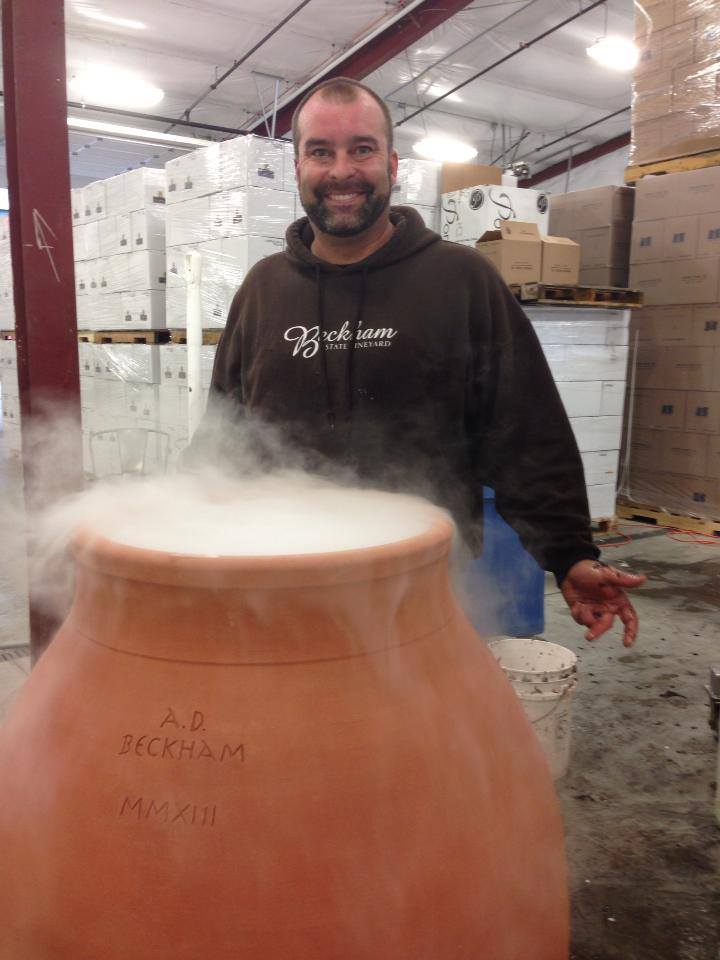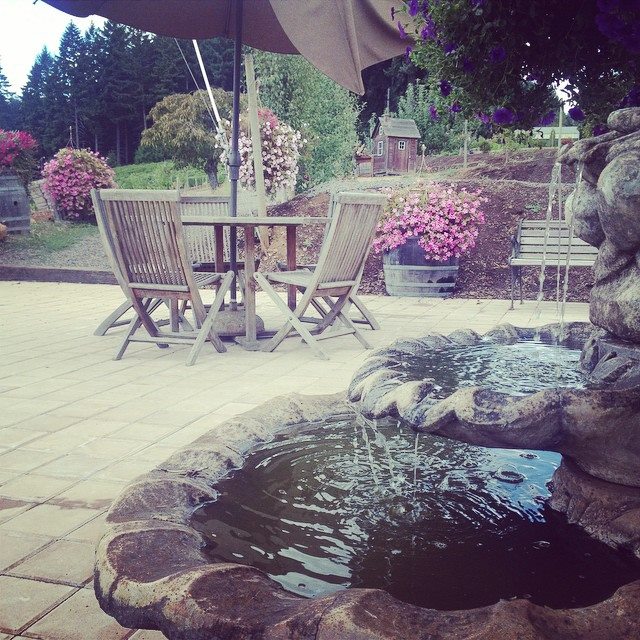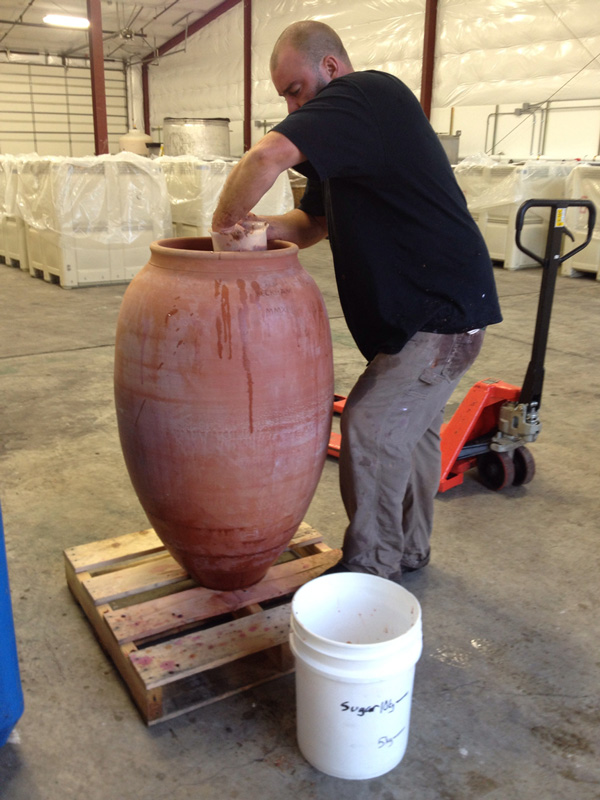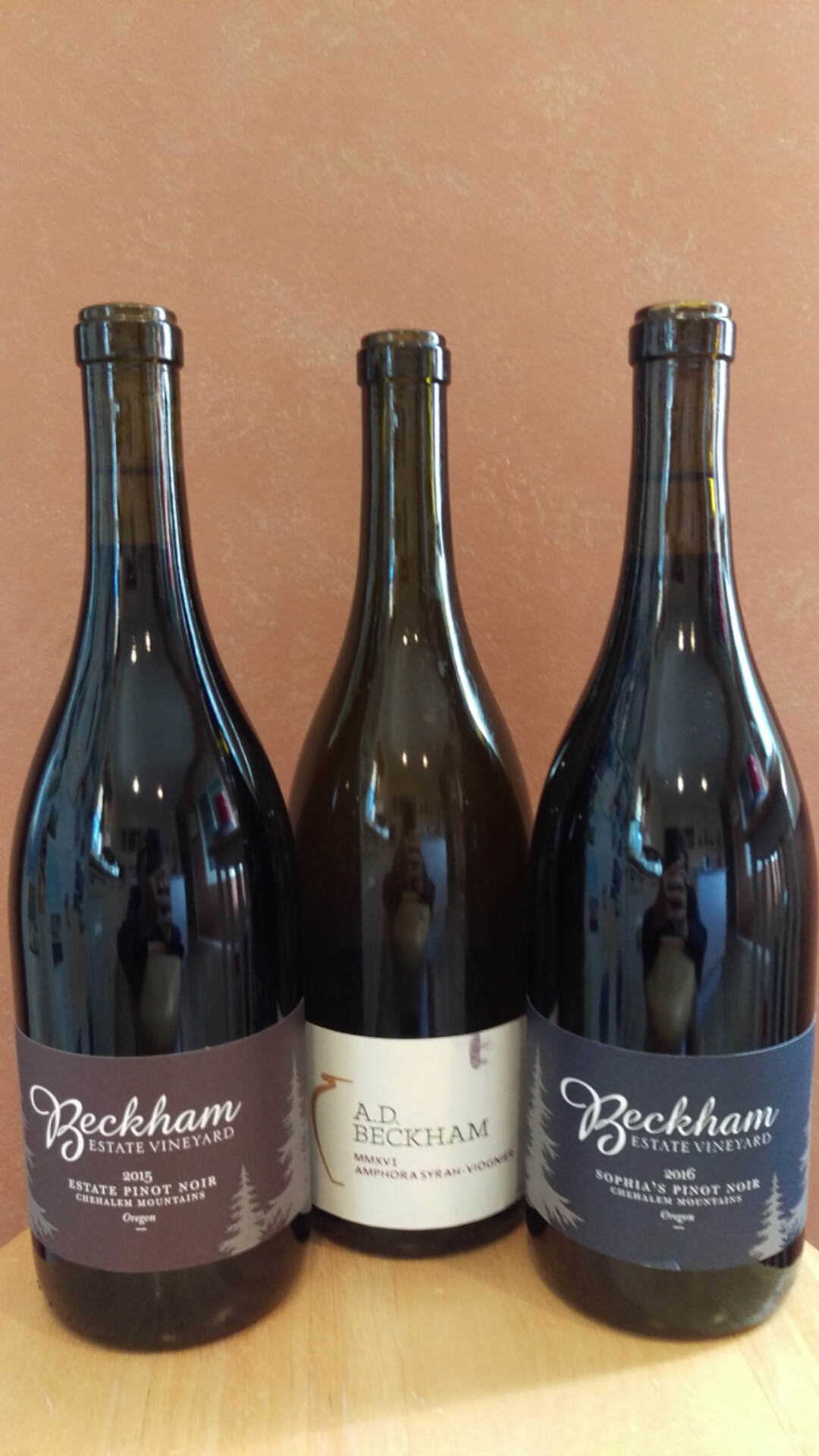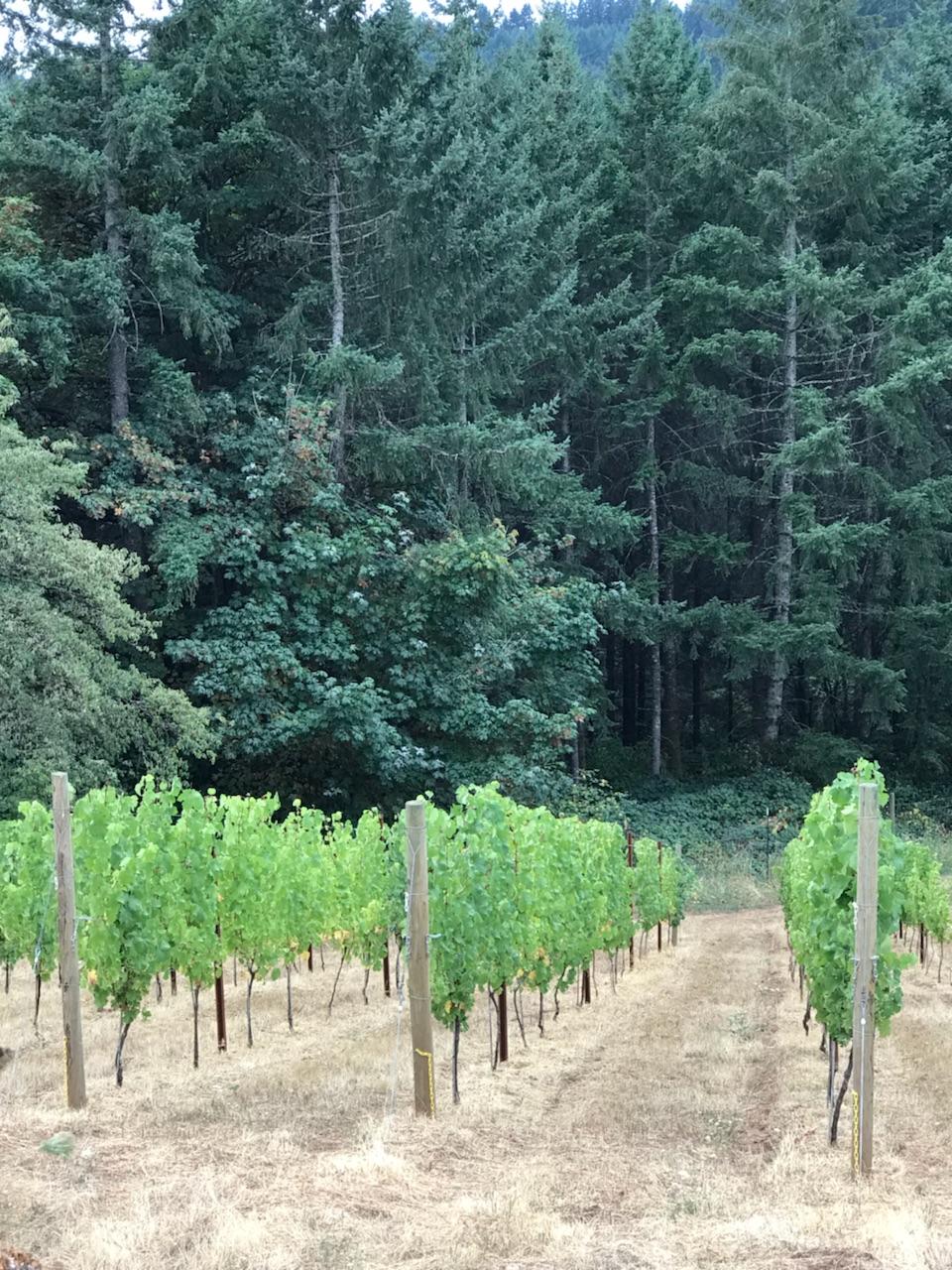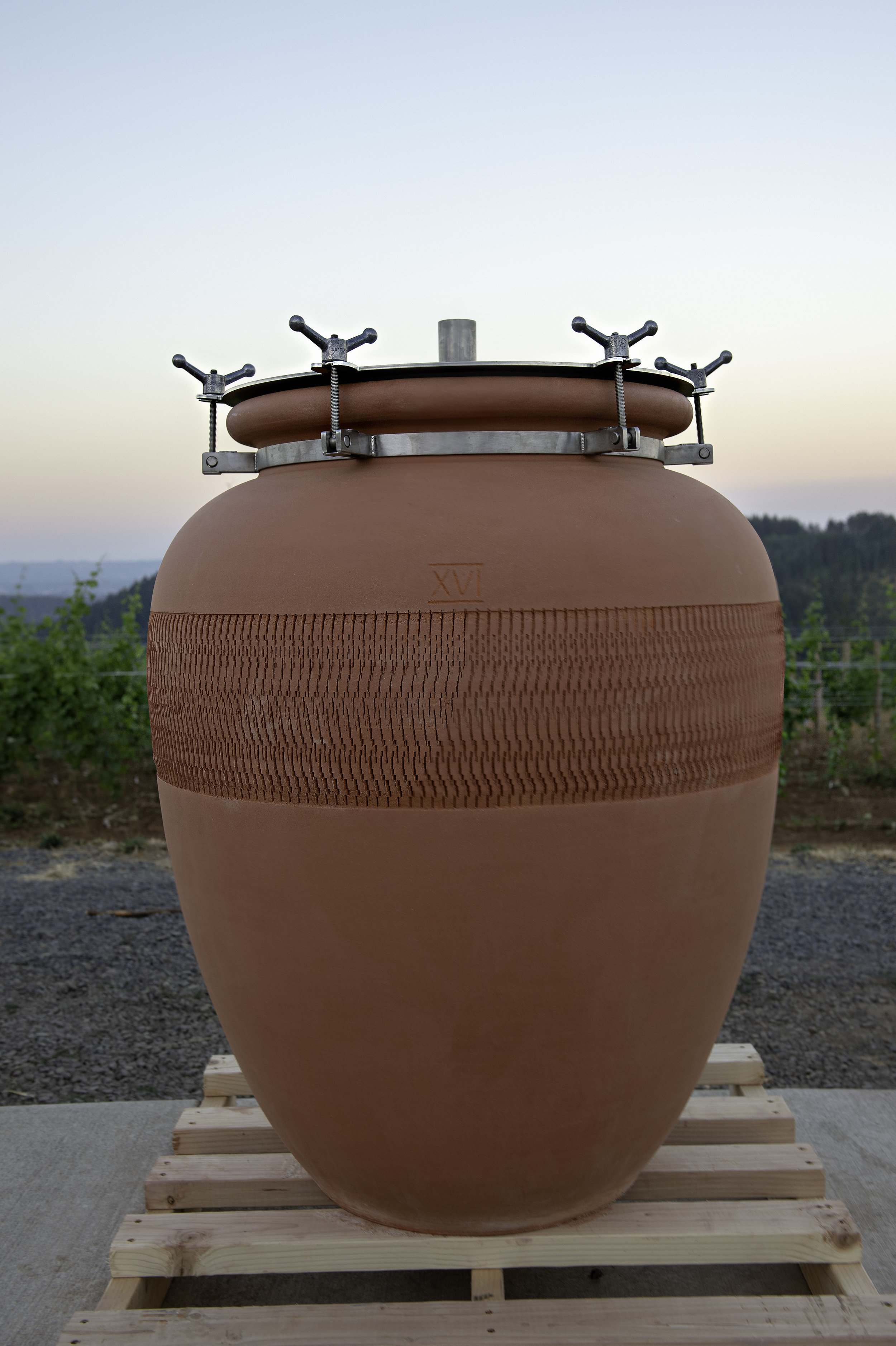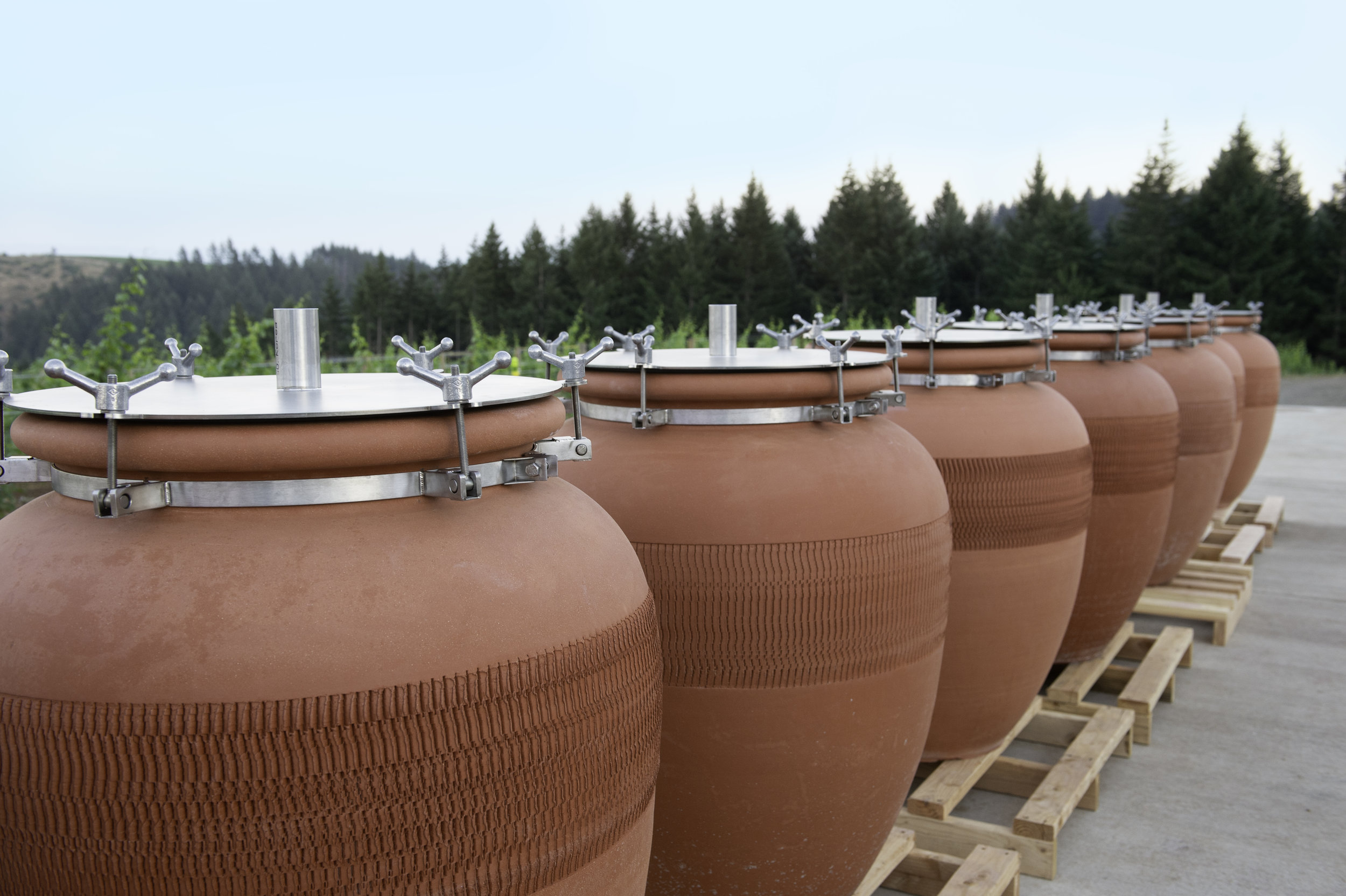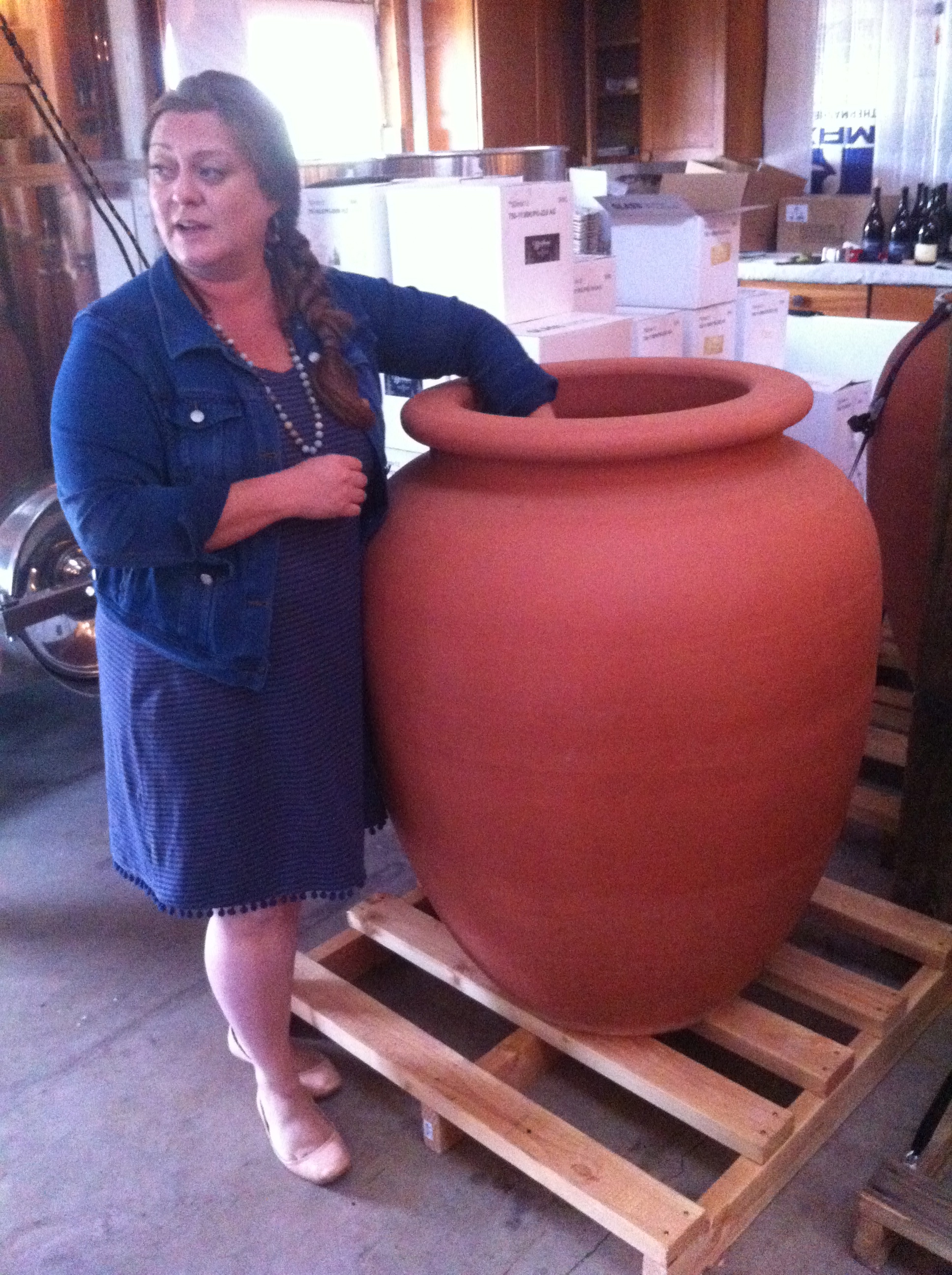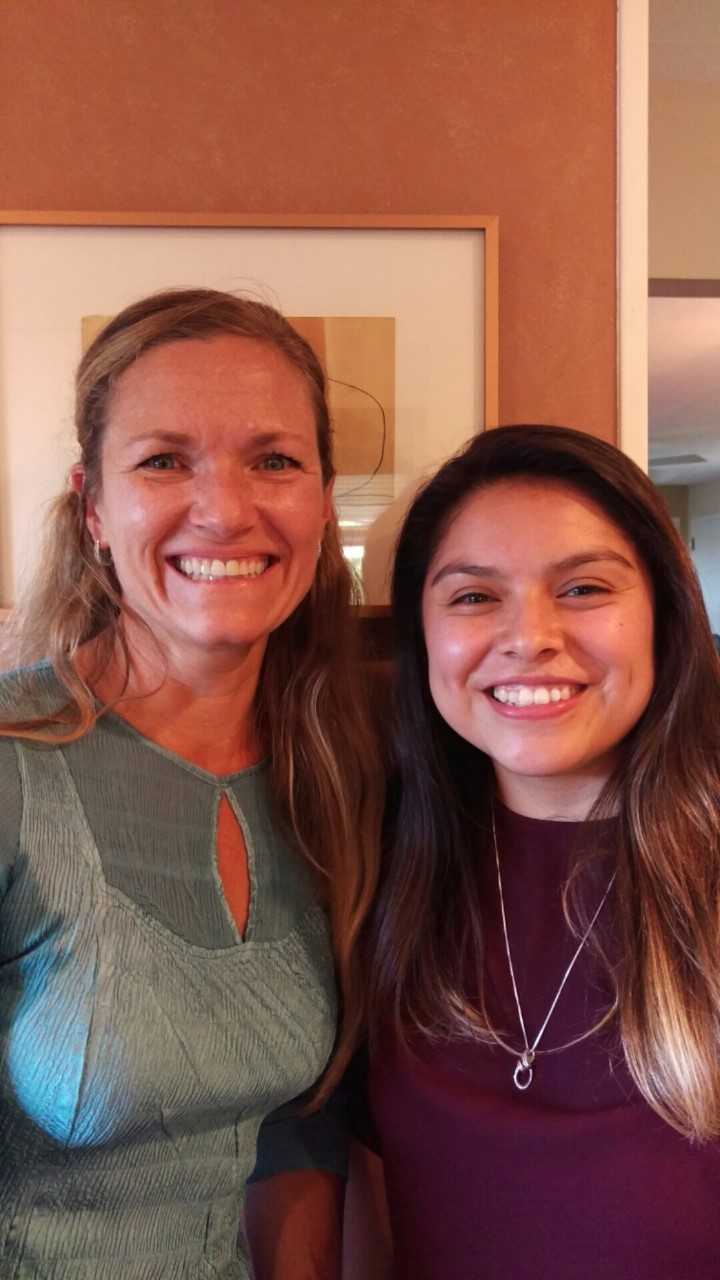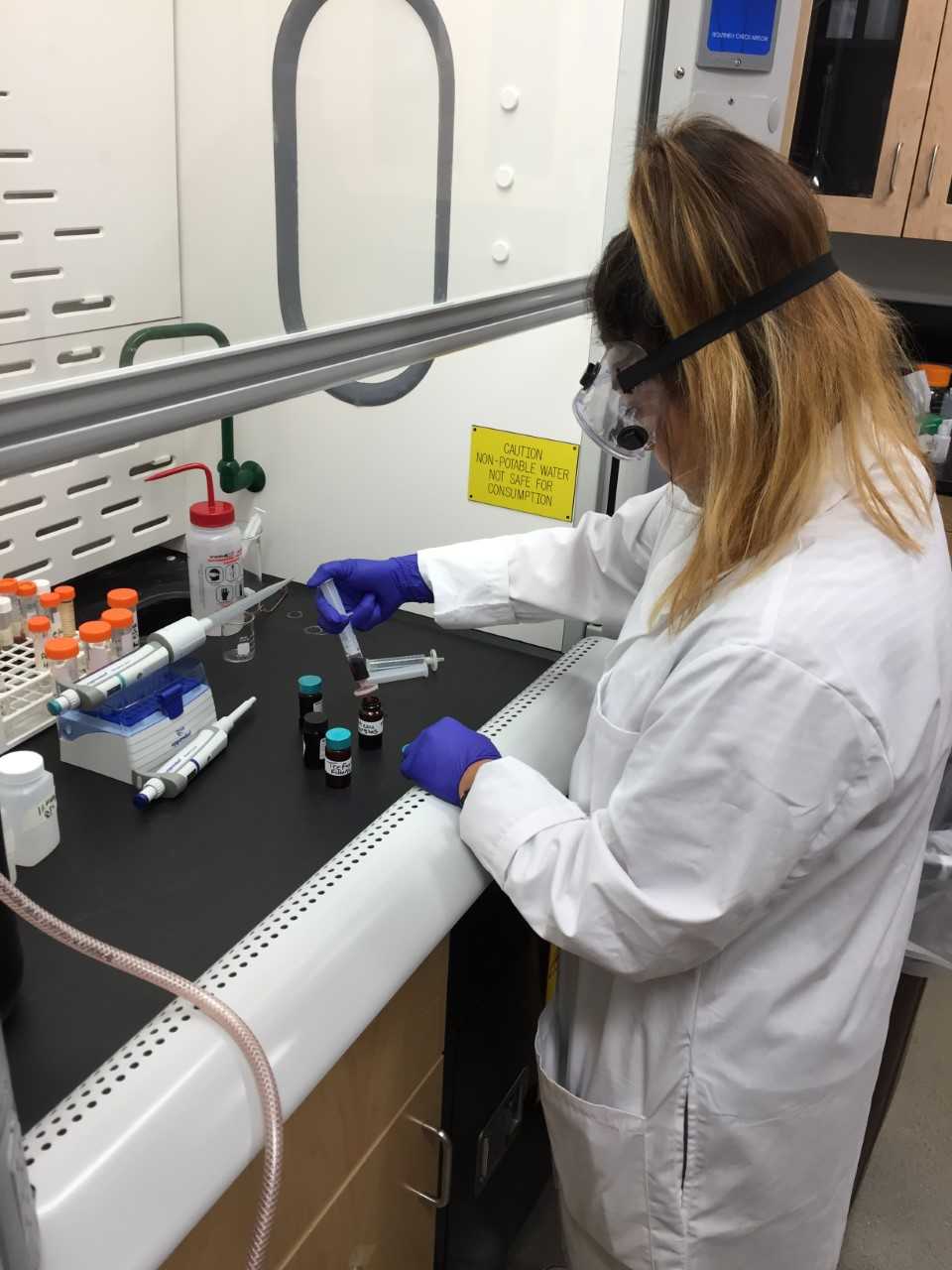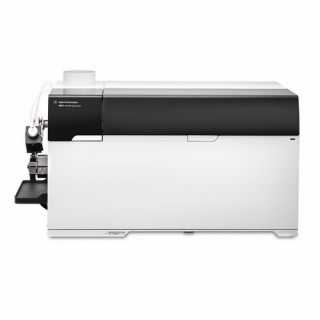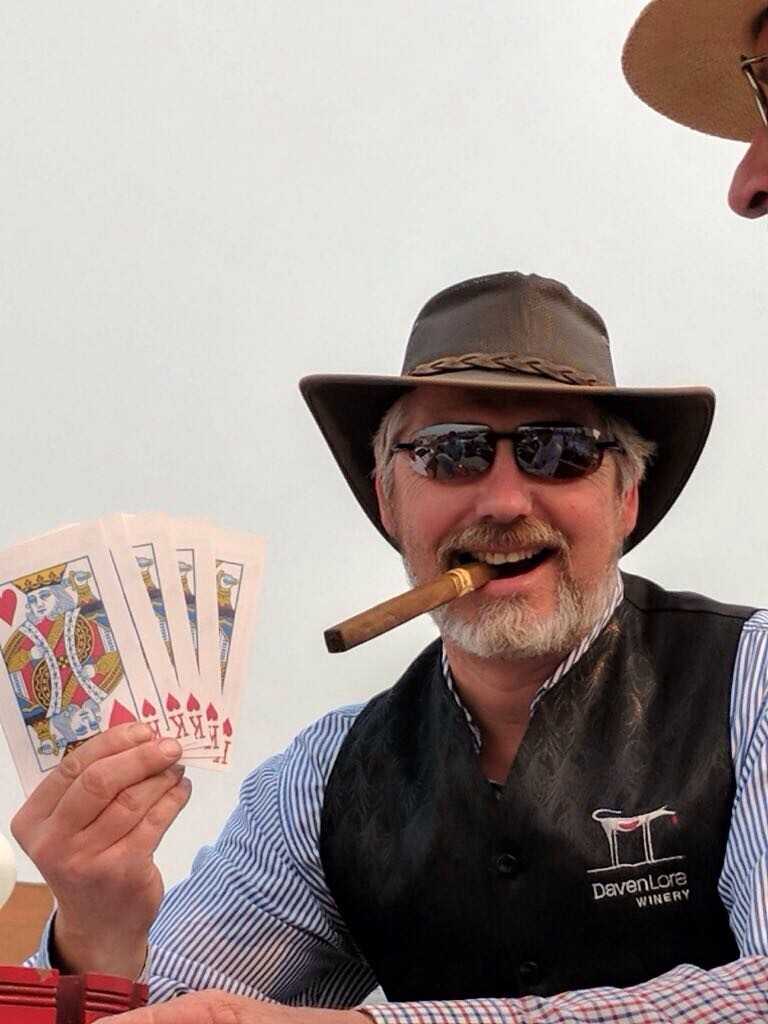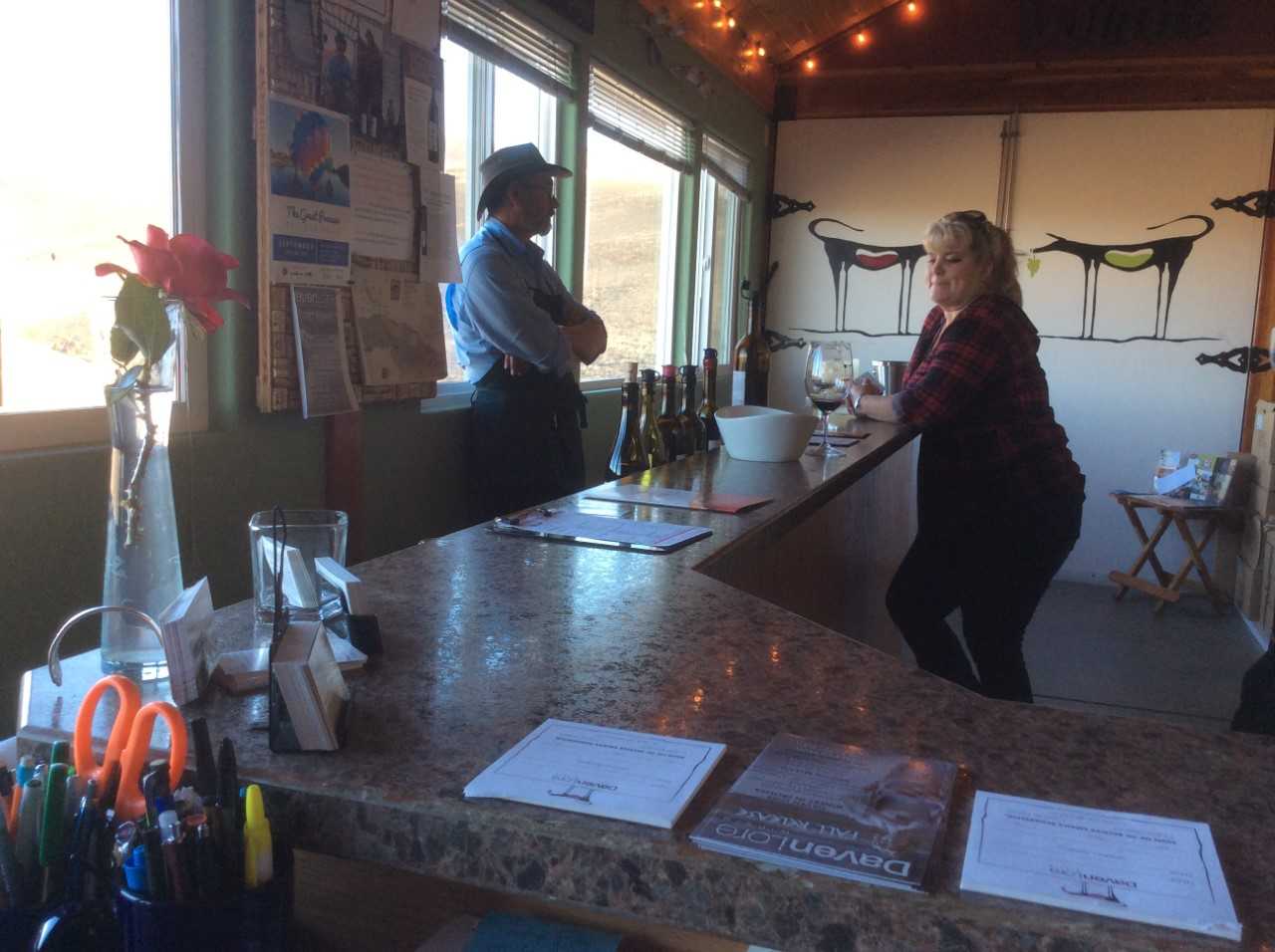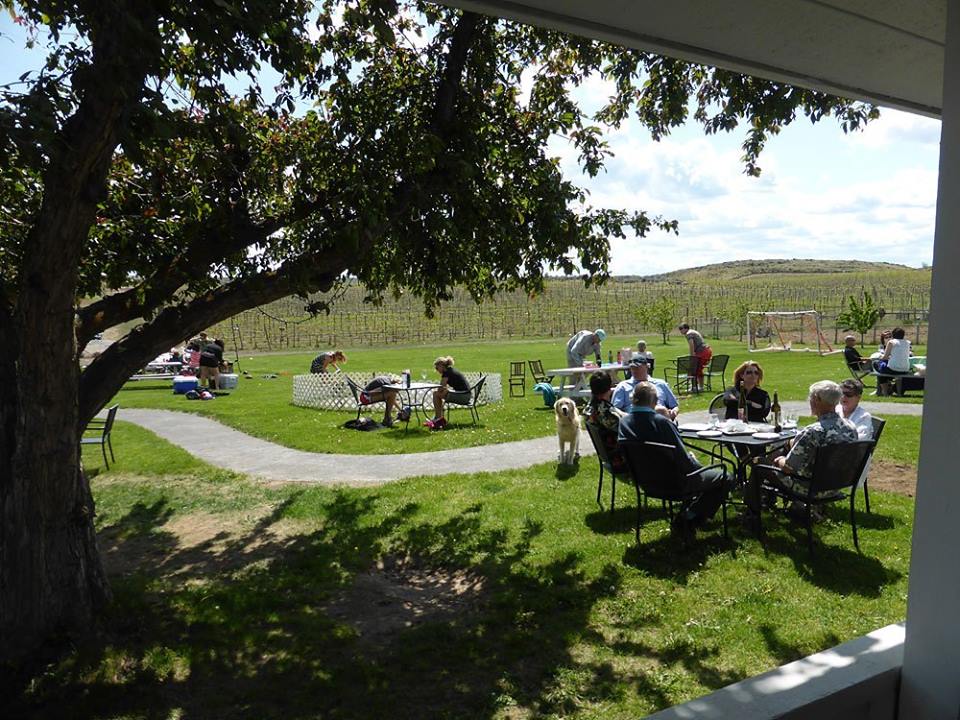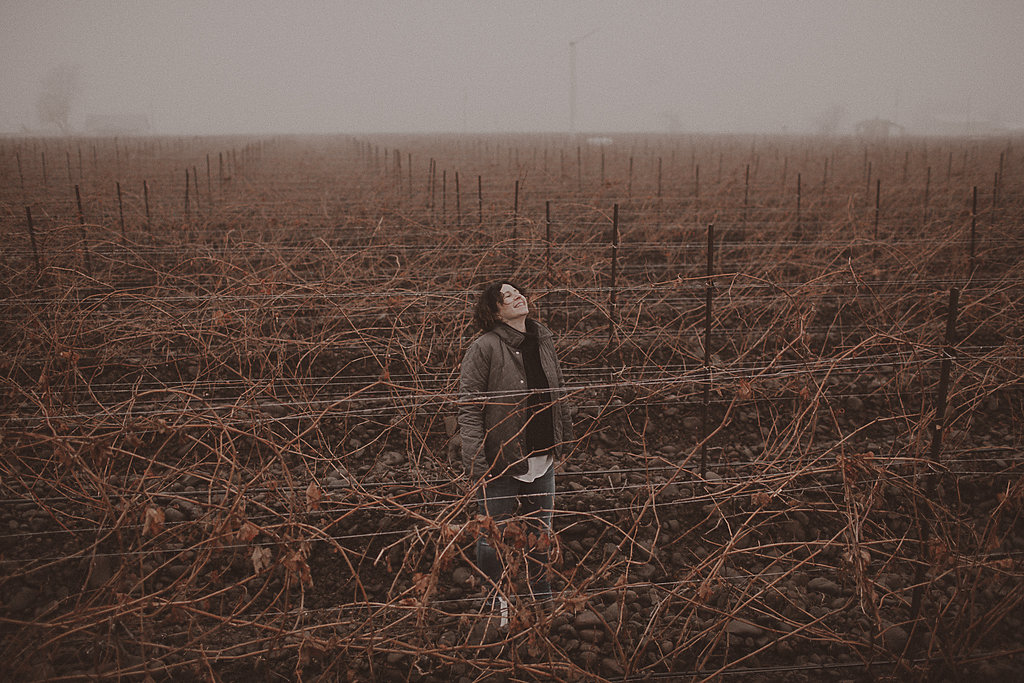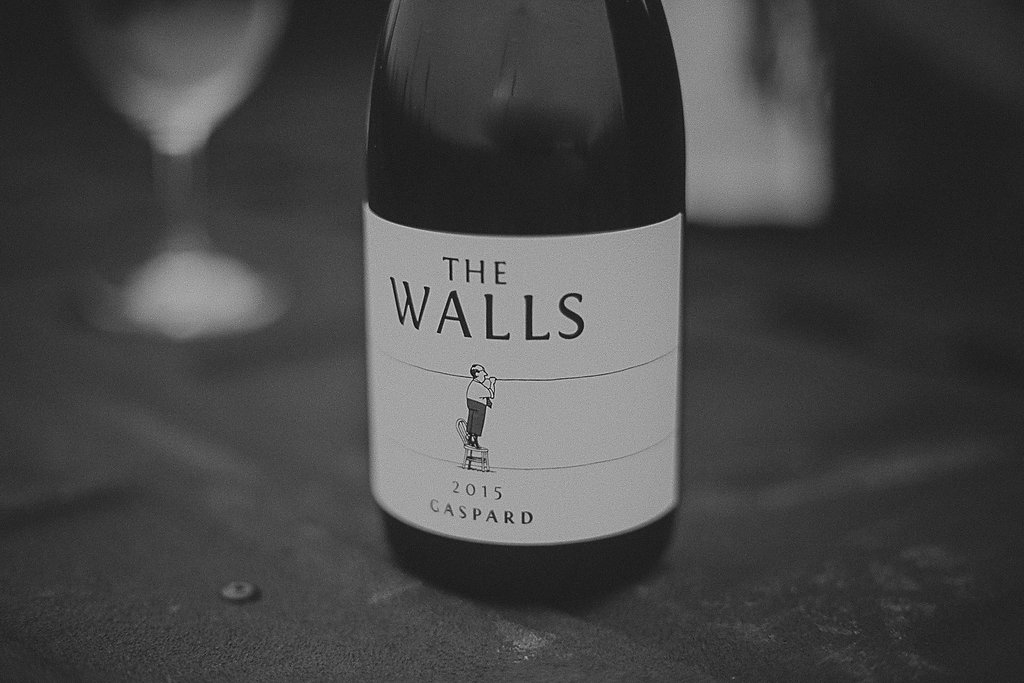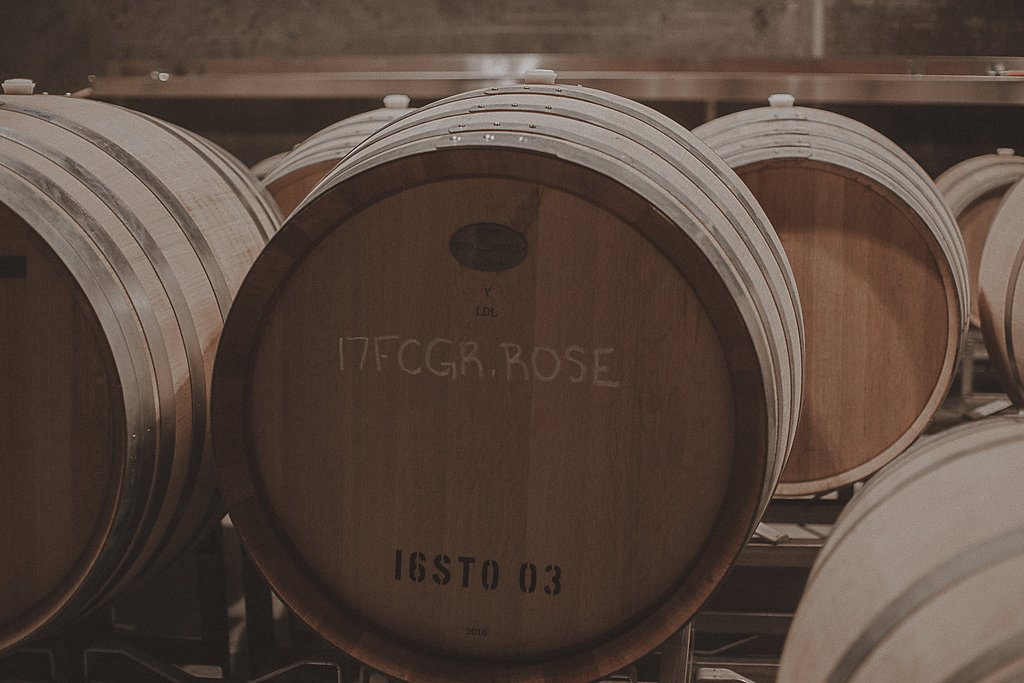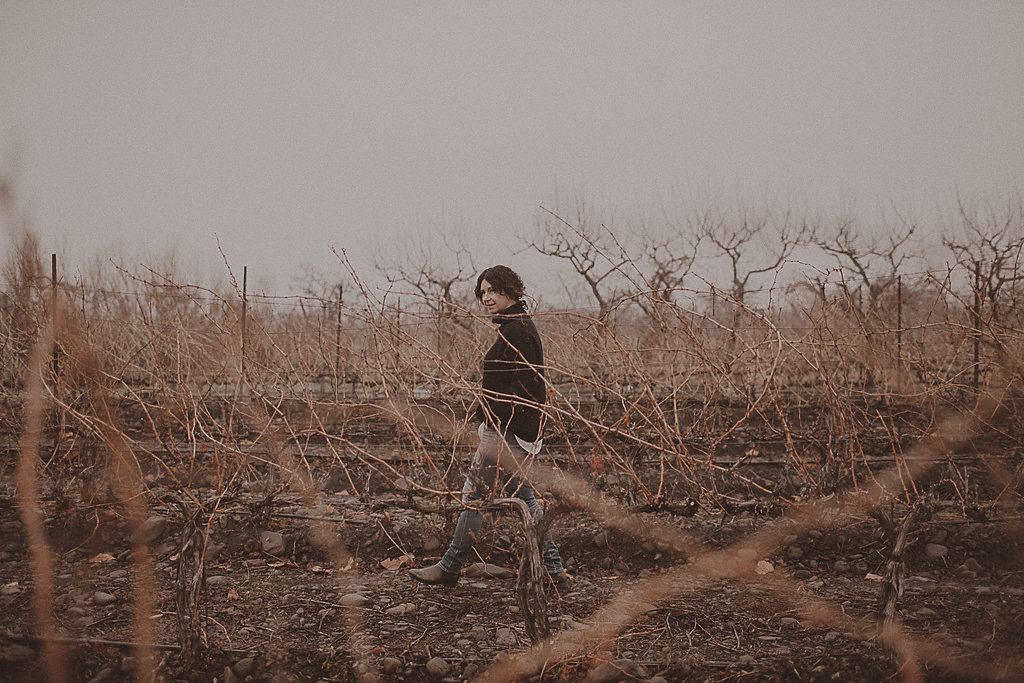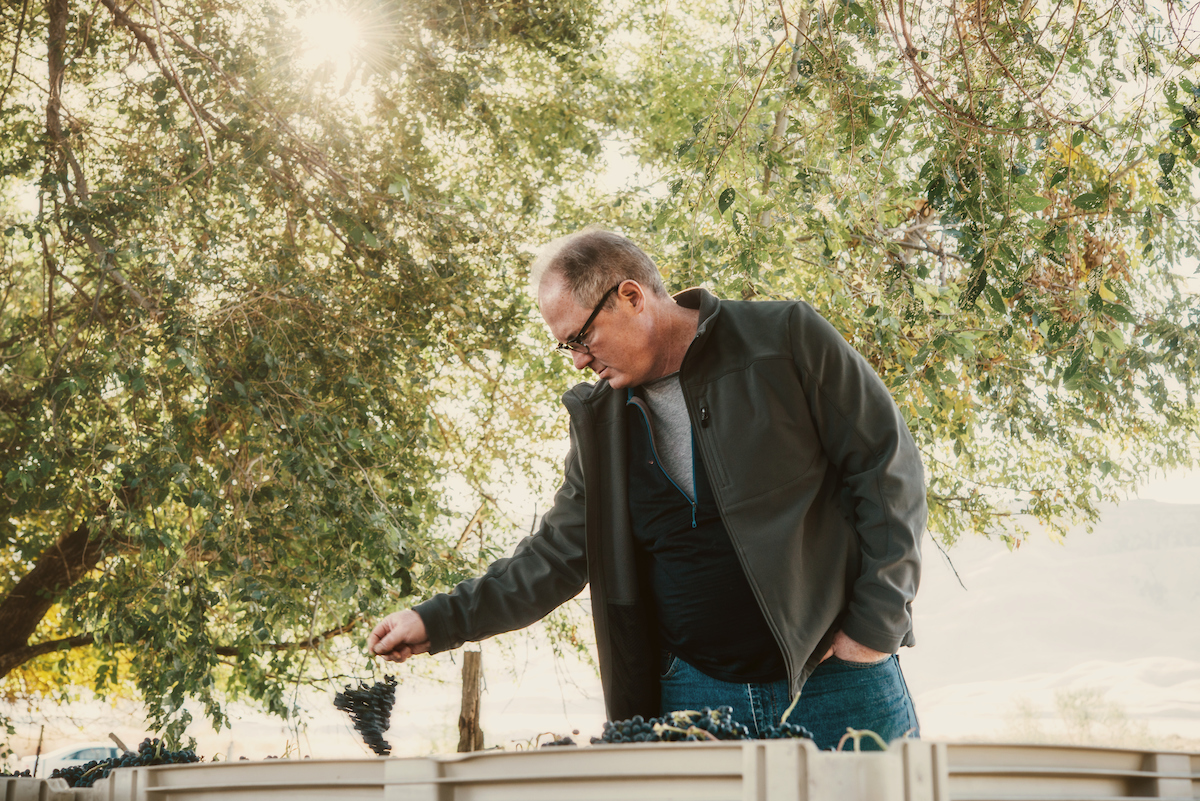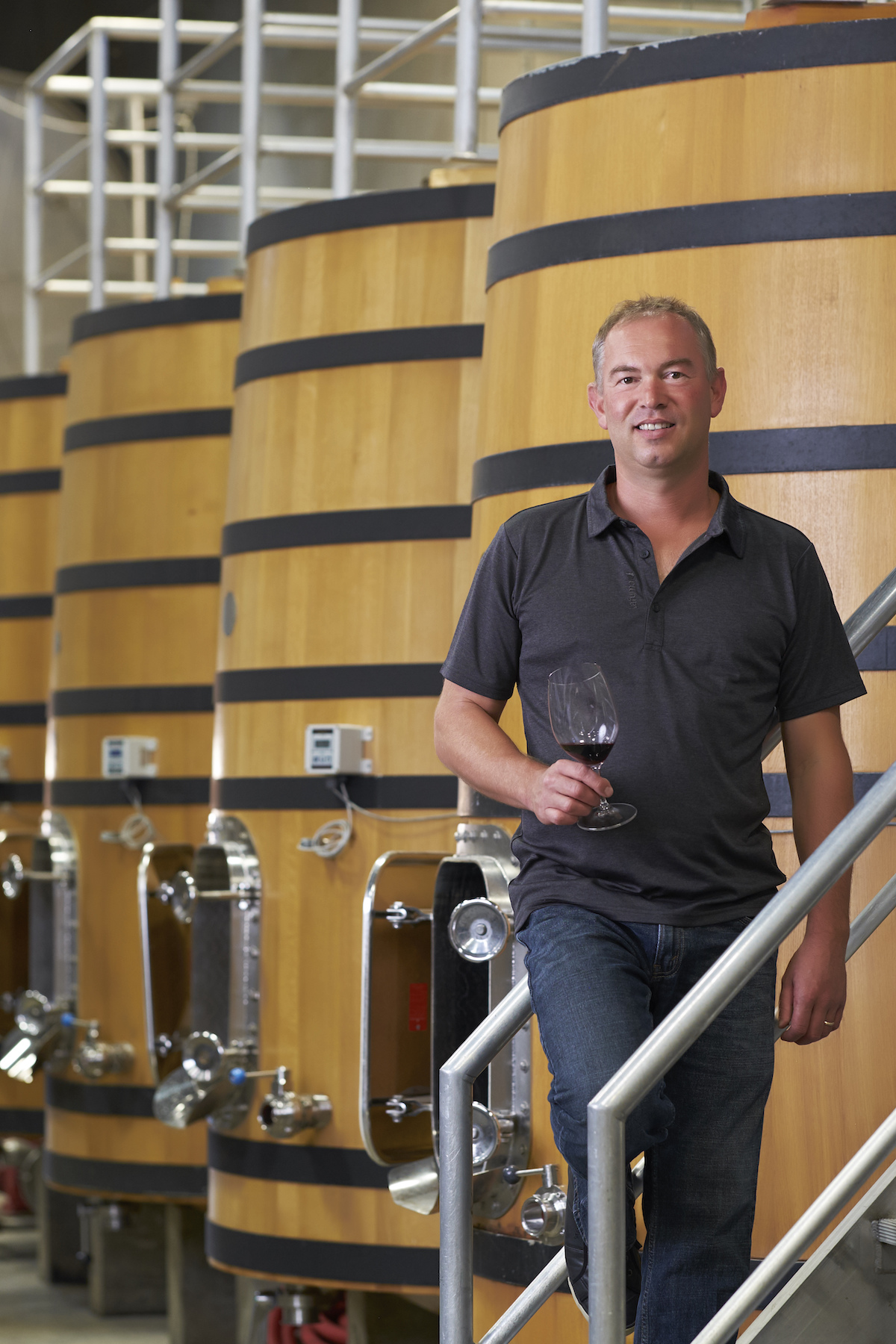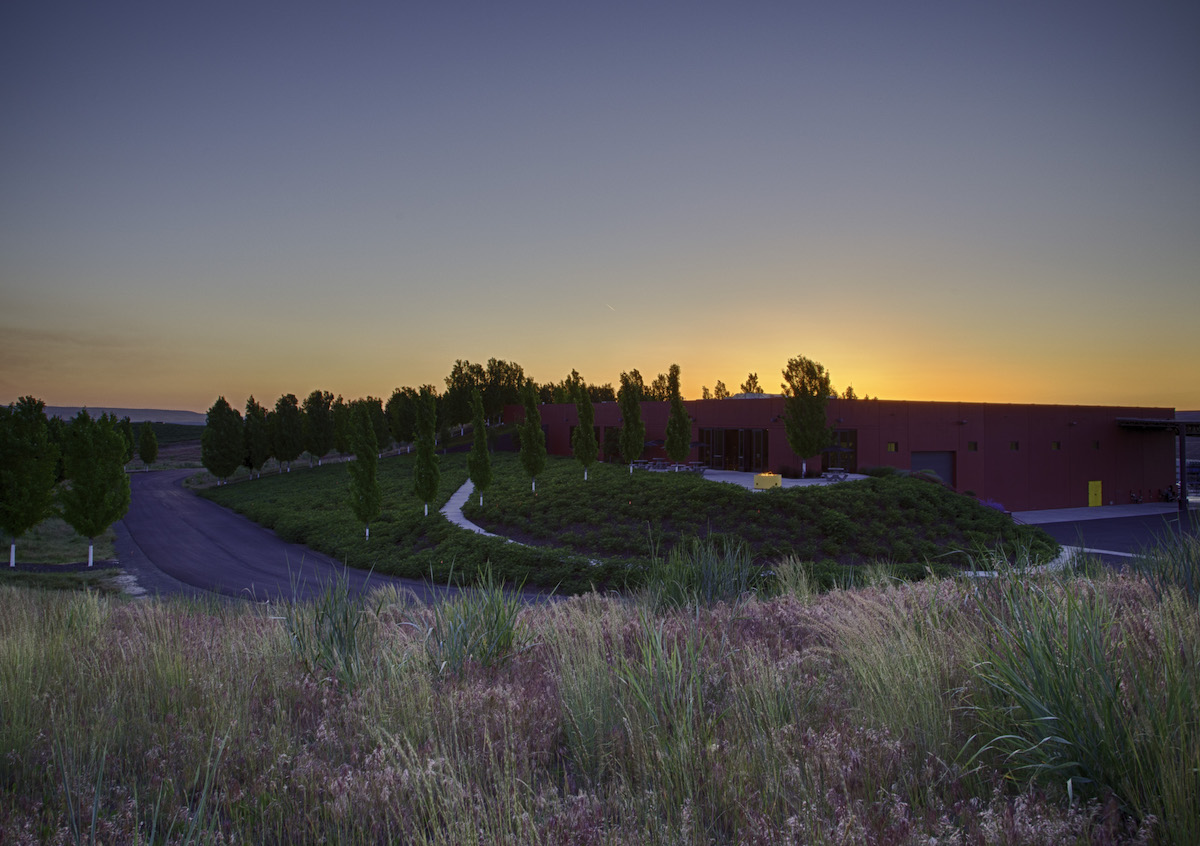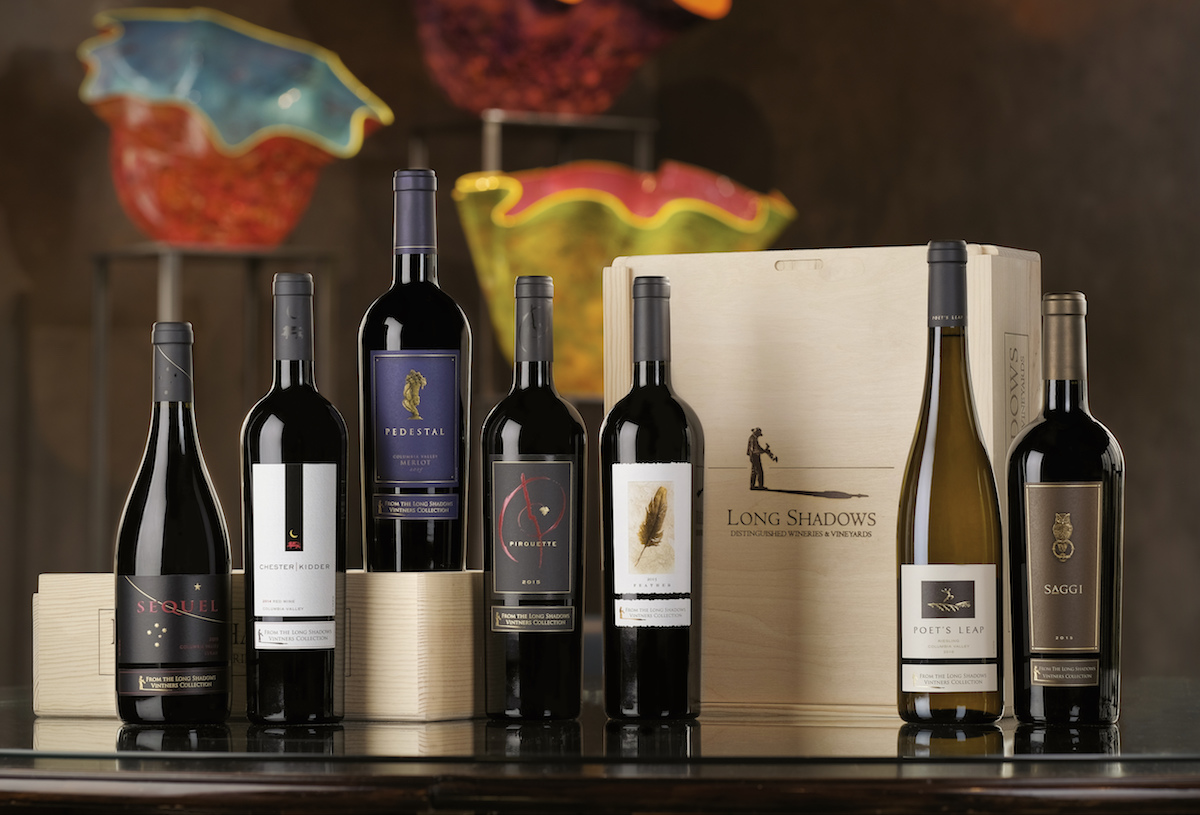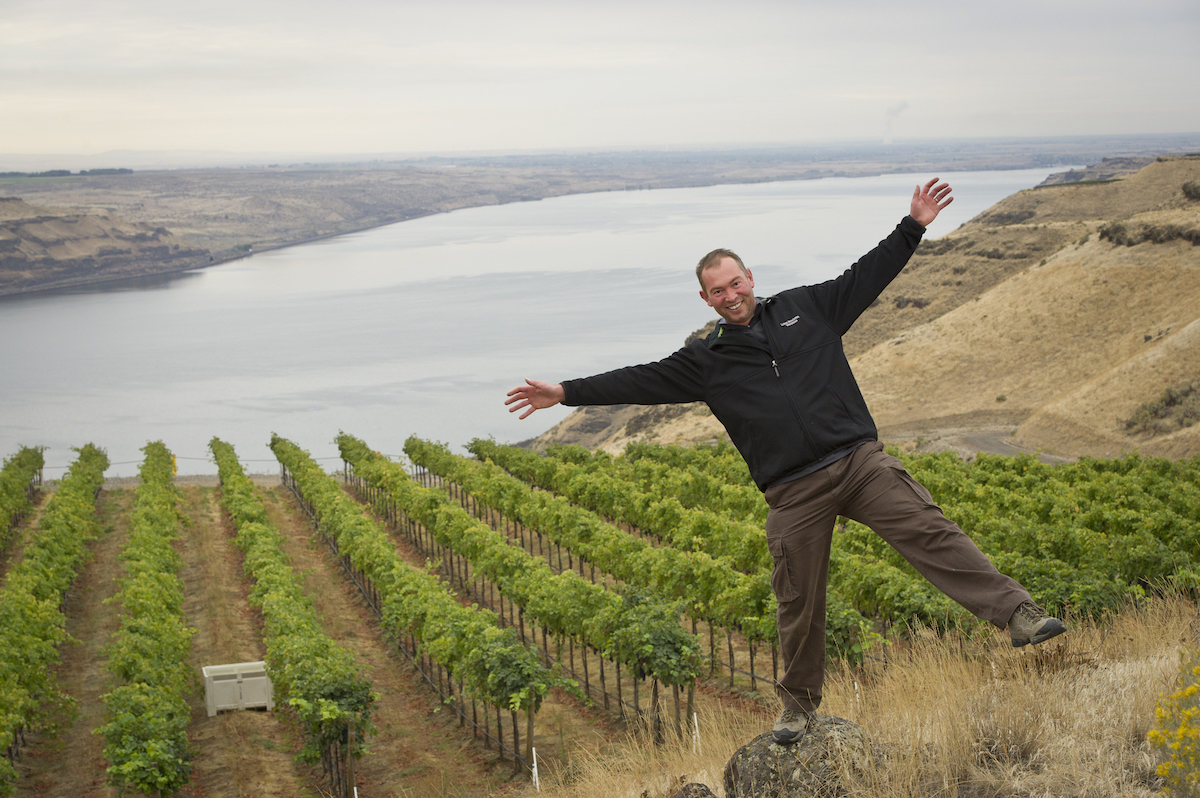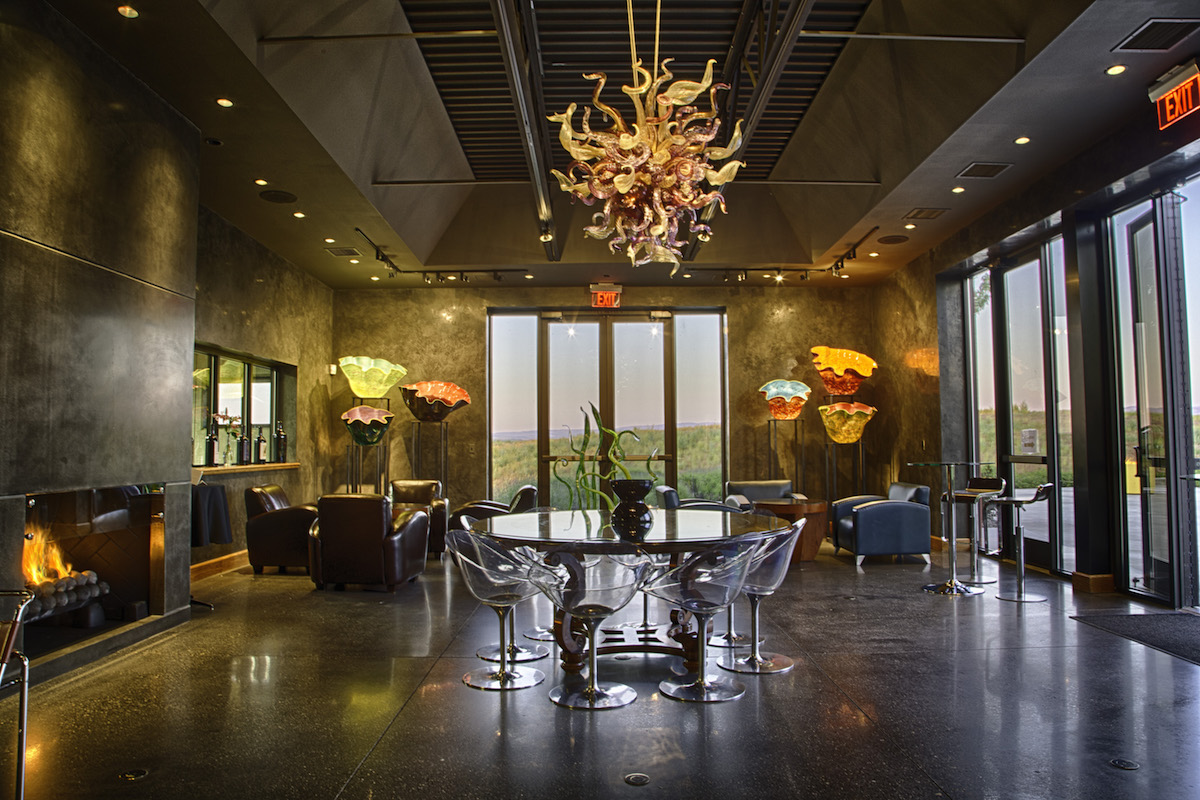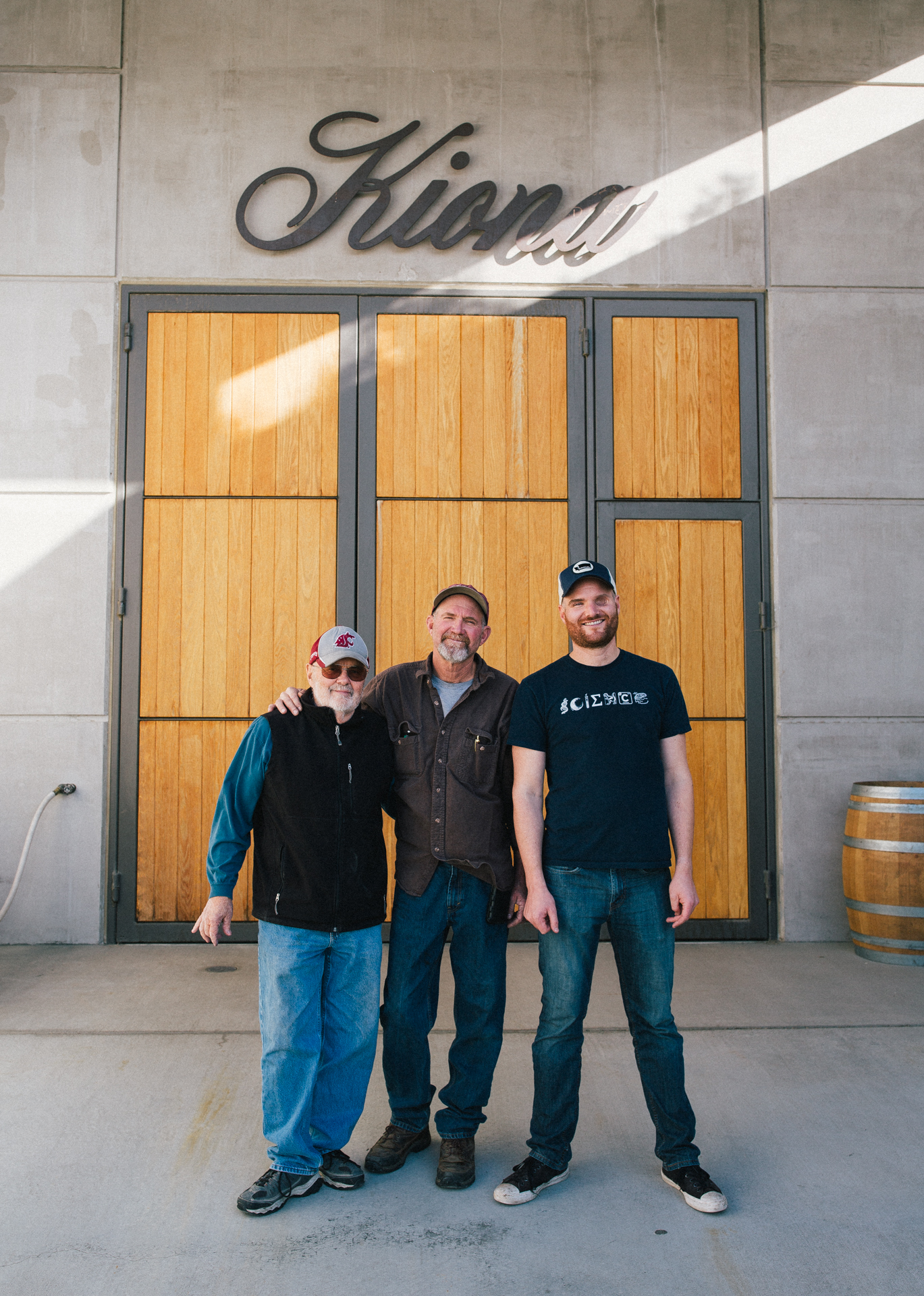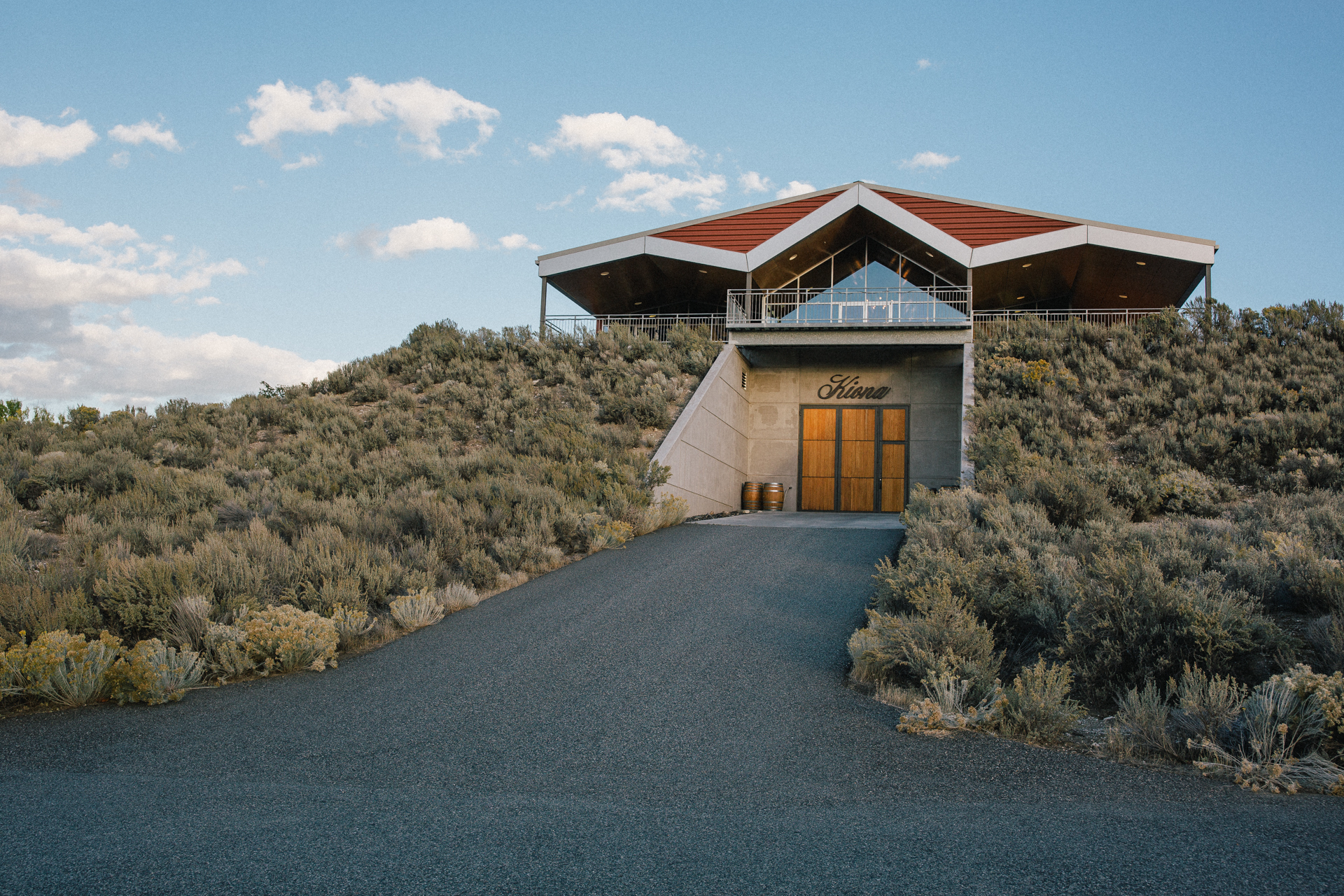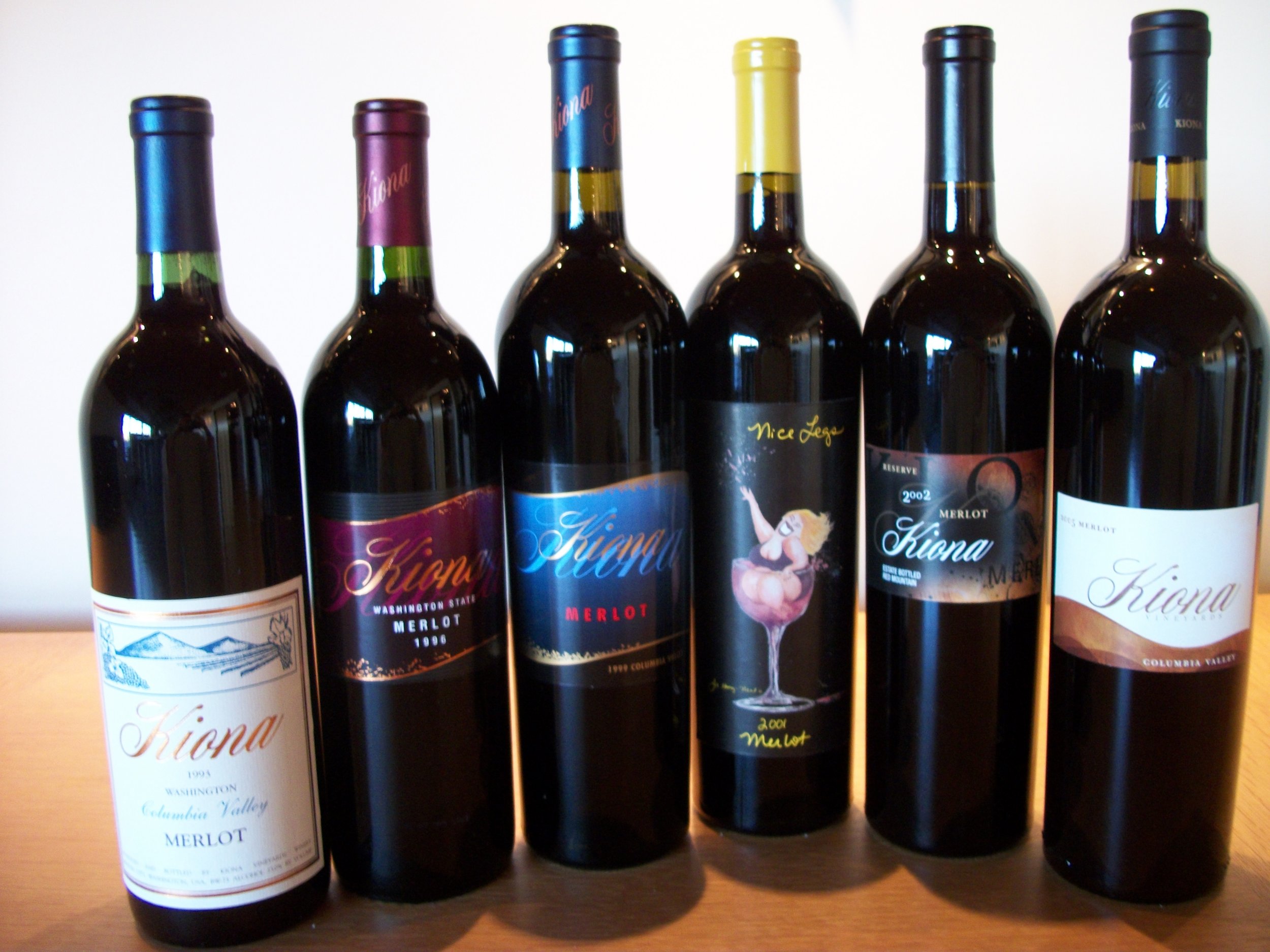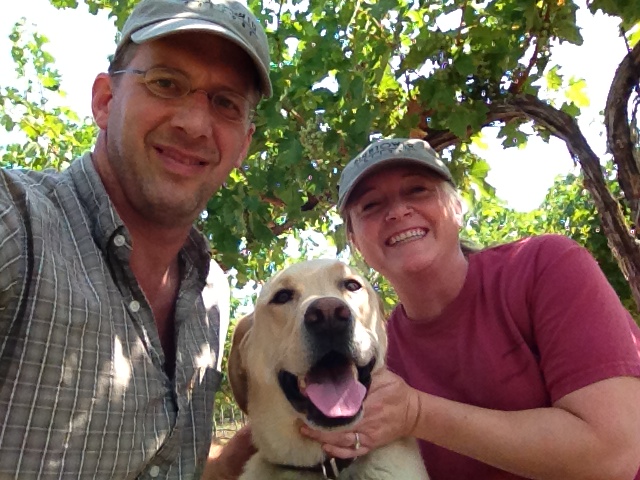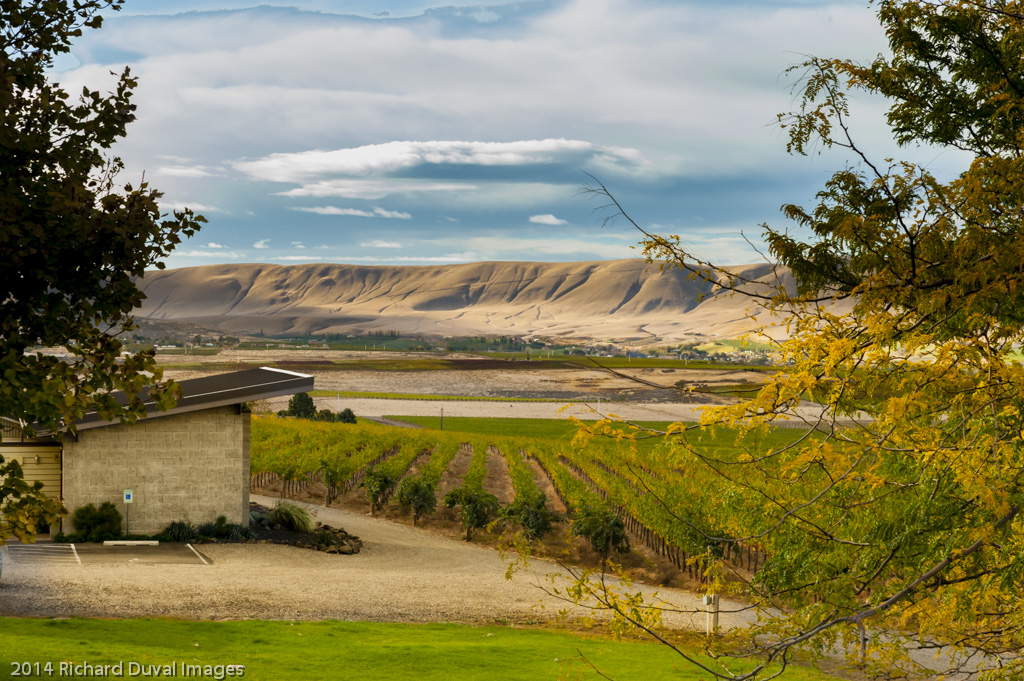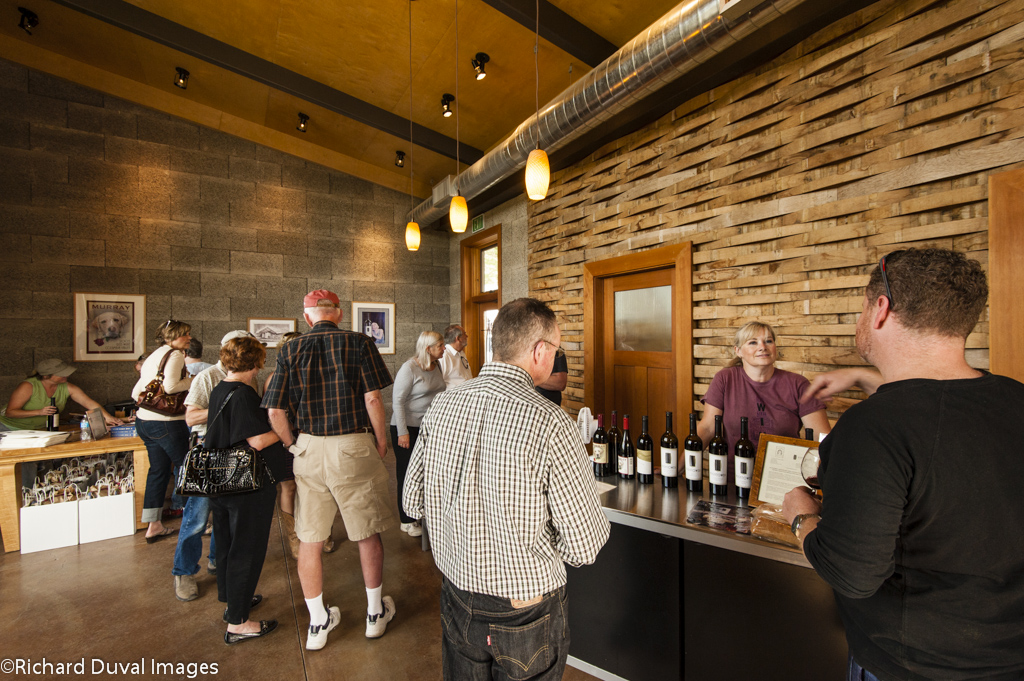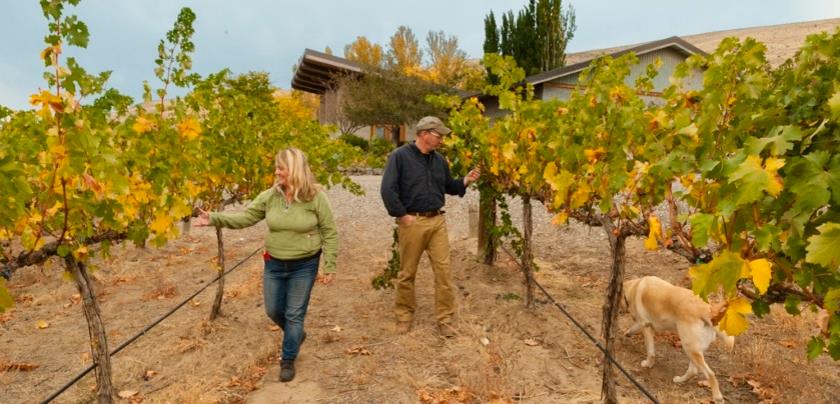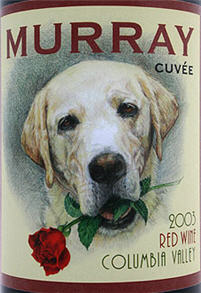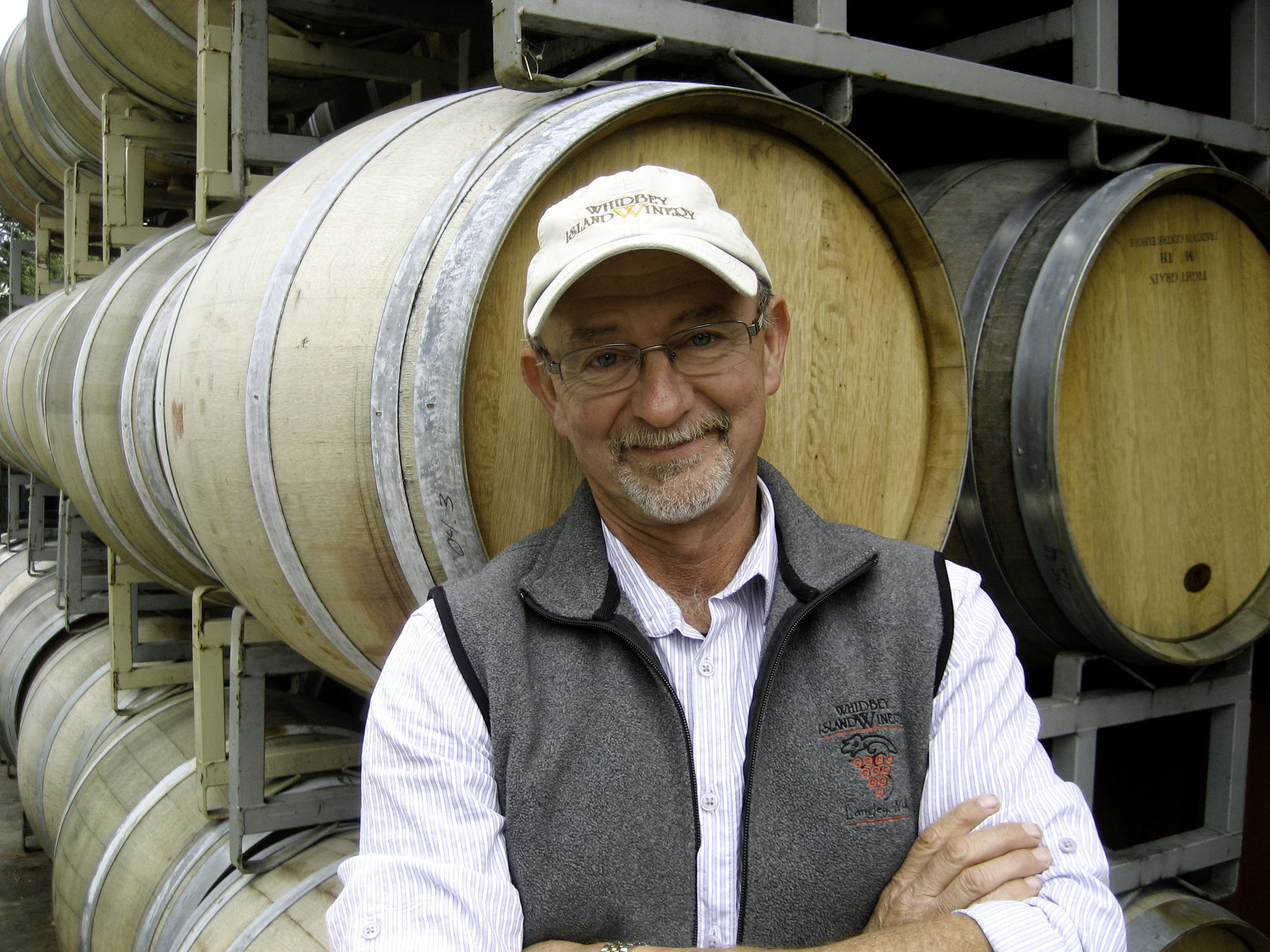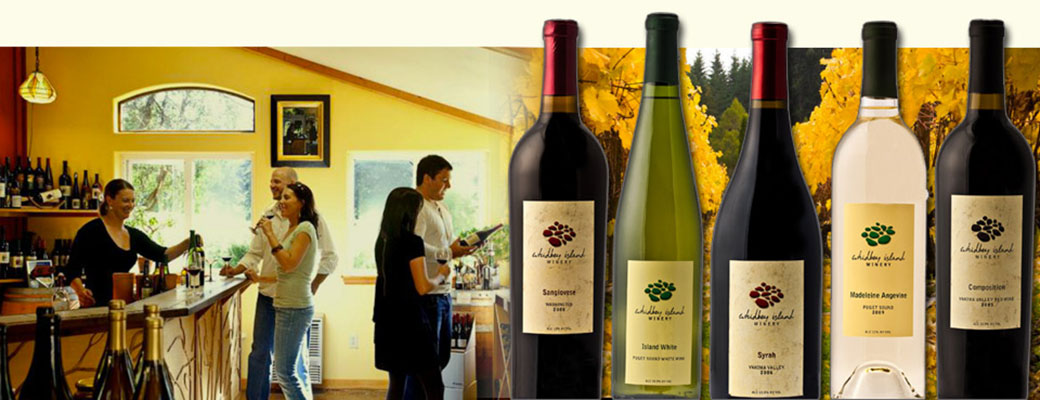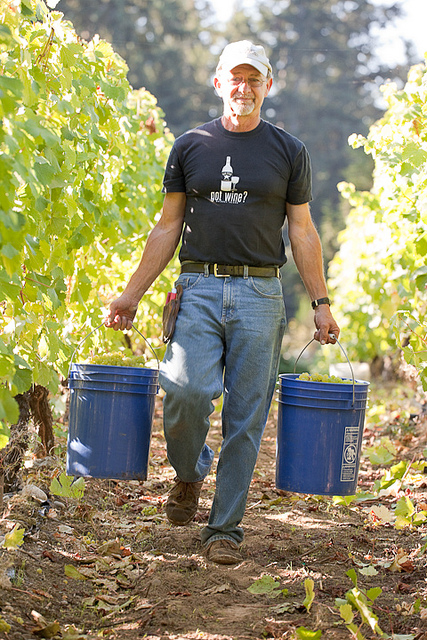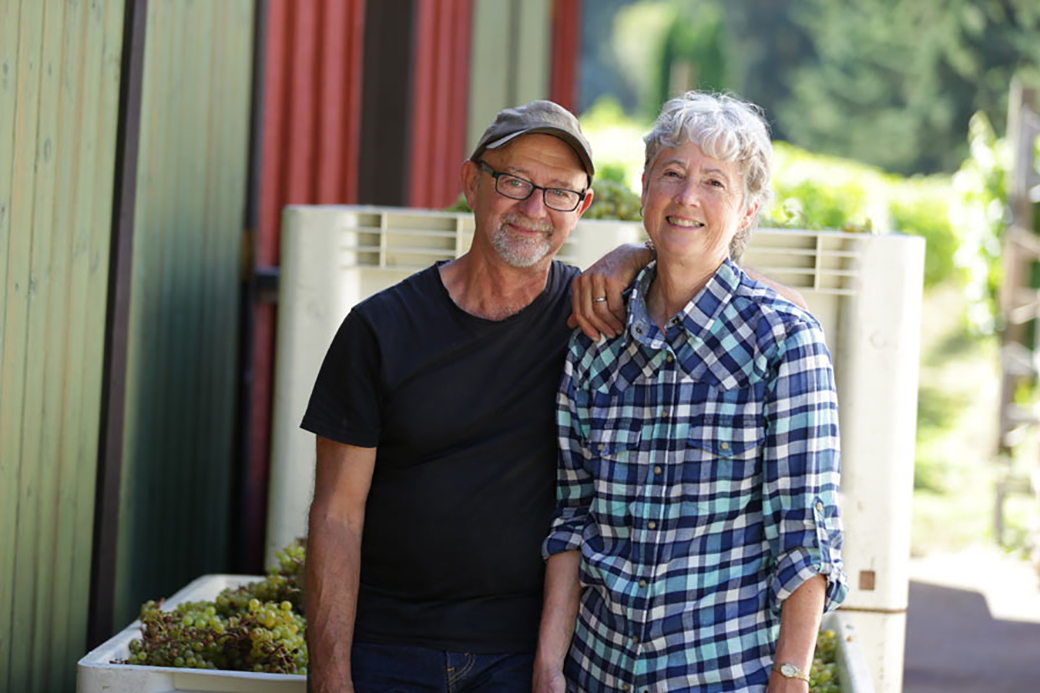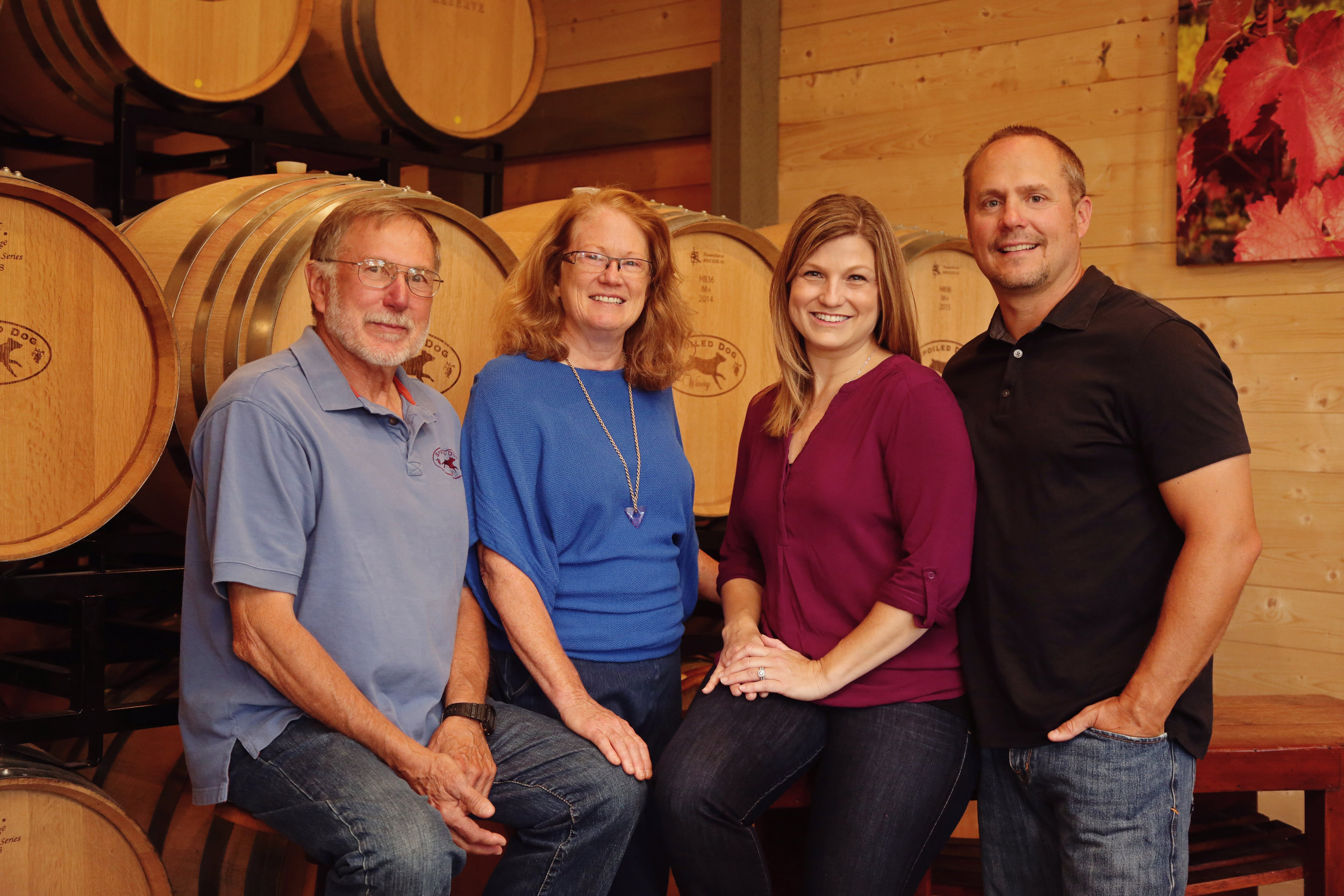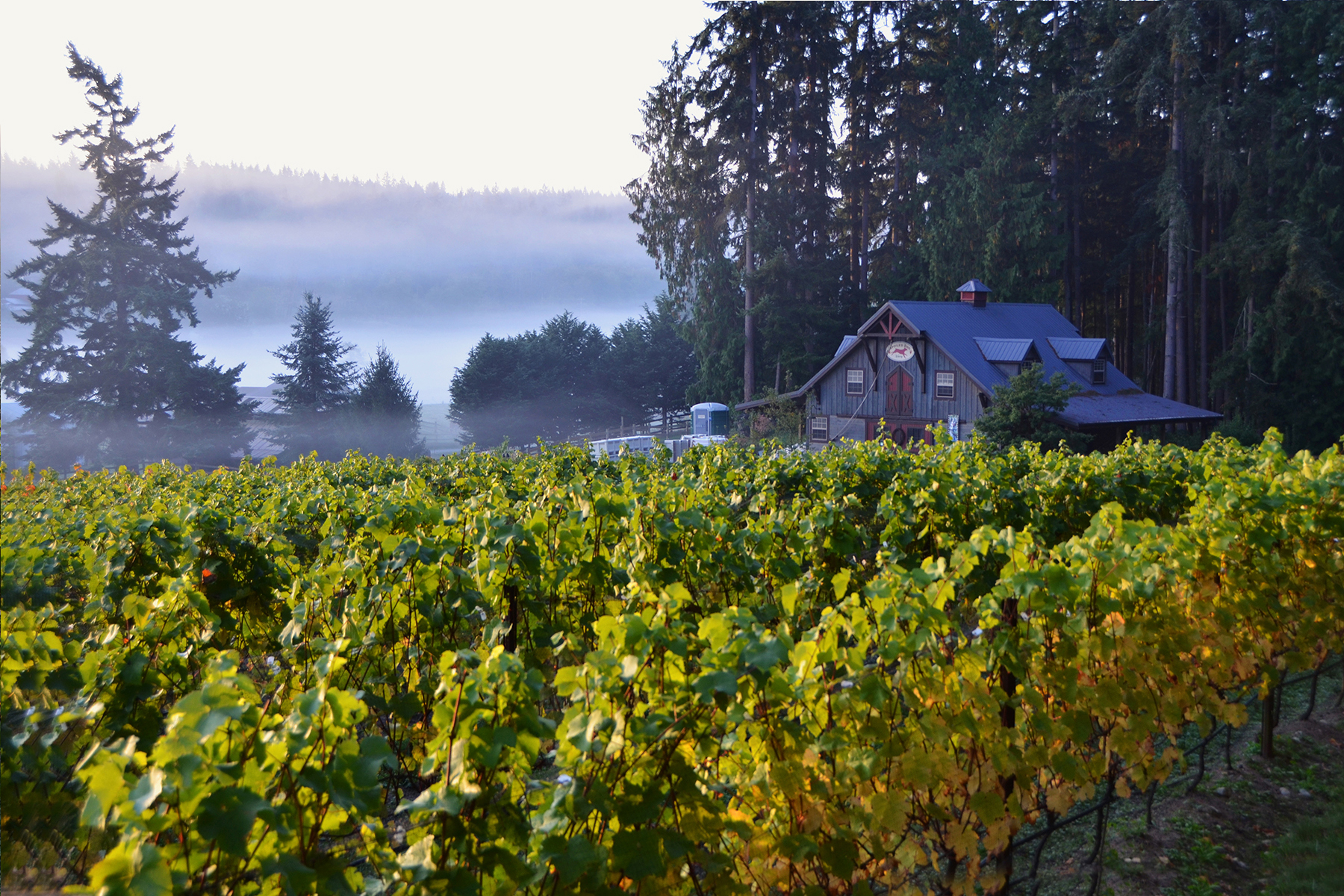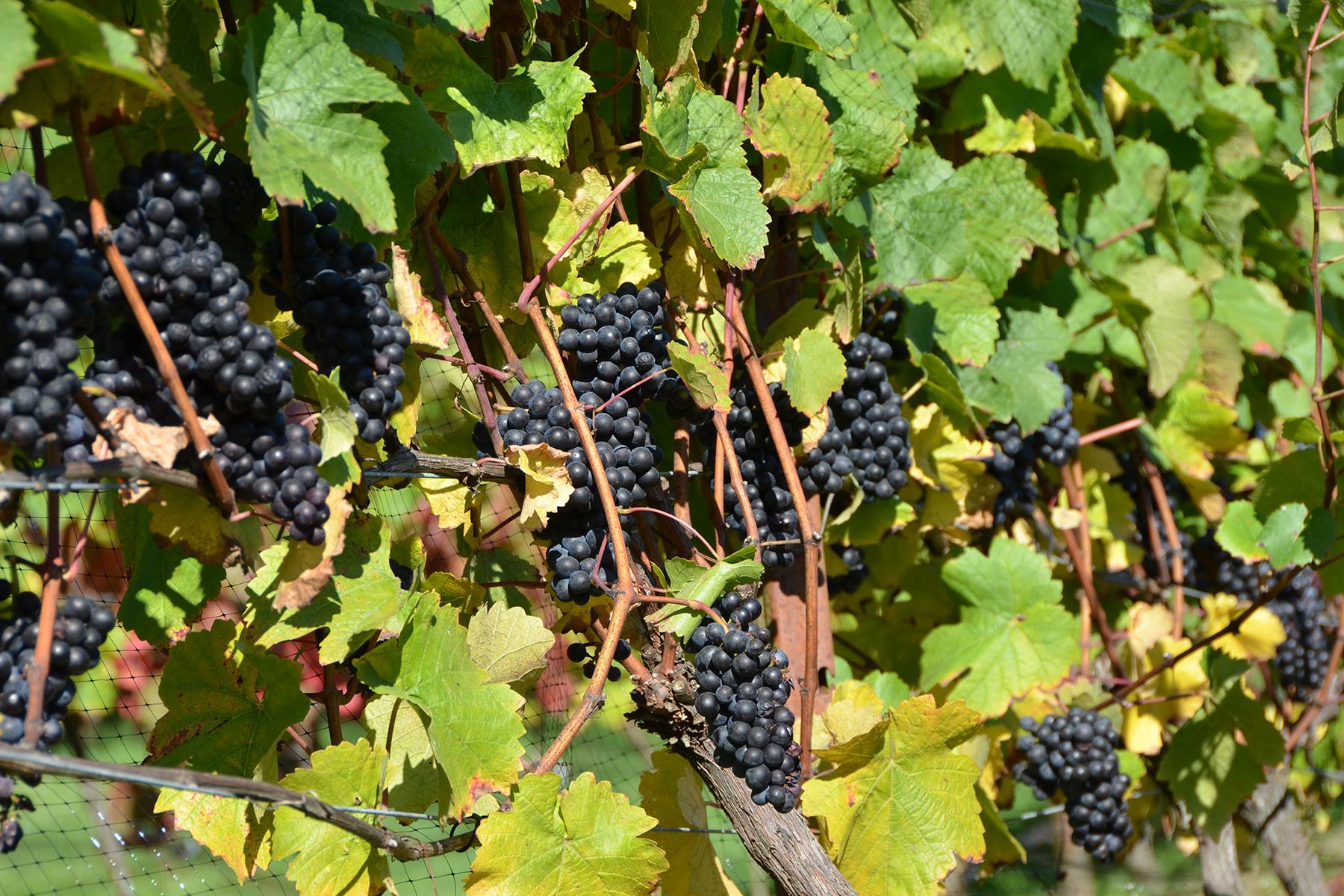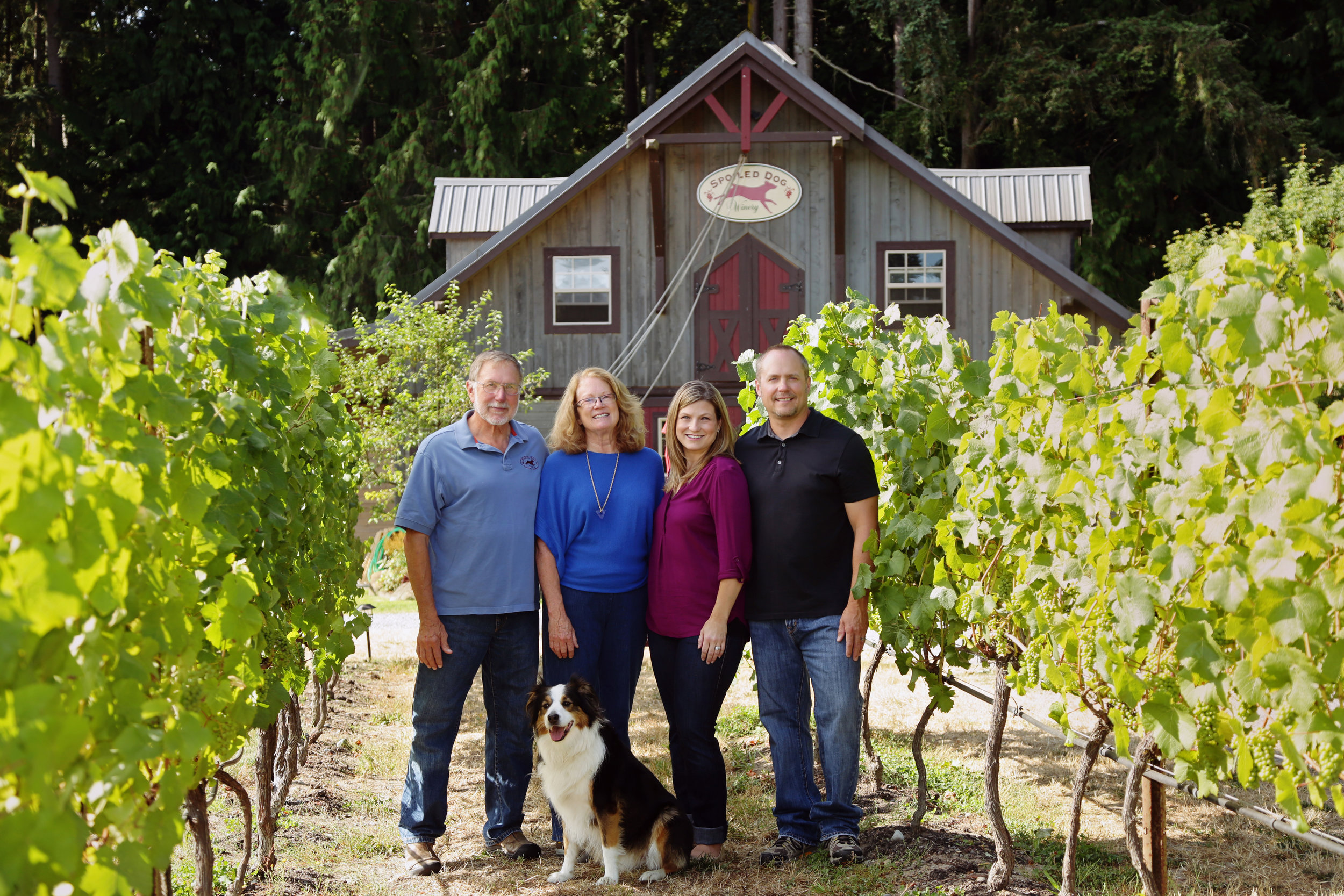Kent and Allison VanArnam
Kent and Allison VanArnam have created a destination vineyard and winery atop the Rattlesnake Hills with stunning views of Mt. Adams and Mt. Rainier. After purchasing the orchard property in 2007, they removed over 6,000 pear trees one by one with their tractor, planted each and every grape vine, and built an impressive facility that includes tasting room, winery, catering facilities, and indoor/outdoor dining venues. They did all the work themselves, designing and building the structures, stage, gardens, and even the stainless steel fountain! A Tuscan-style guest house for renting is in progress, as is the clearing of additional acres for vines. Their day jobs are in Ridgefield not far from Vancouver, WA where they have a second tasting room in the Cellar 55 Co-op Tasting facility.
VanArnam Vineyards is planted to Bordeaux and Syrah varietals, and all the red wine produced is from estate fruit. The single varietal Cabernet Sauvignon, Cabernet Franc, Merlot, Malbec and Syrah wines are 100% varietal, though the VanArnams also produce two red blends—Melange and Red River. The 2011 Melange received 91 points from Wine Spectator, and is to date the only VanArnam wine that has been submitted to Wine Spectator. The VanArnams also produce white wines, typically with Viognier, Roussane and Riesling varietals from nearby vineyards. Listen to the interview to learn about this stunningly beautiful sipping stop along the Rattlesnake Hills Wine Trail, and the VanArnam winemaking philosophy, including information about vin de goutte, yeast selection, reserve wine protocol, and much more.
Listen to the Interview:













